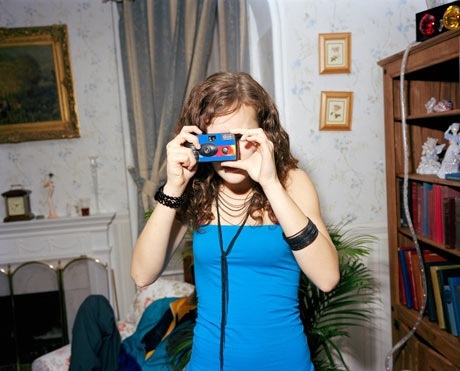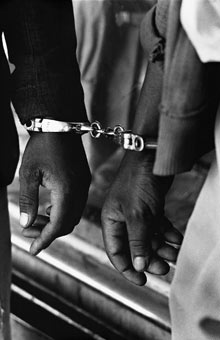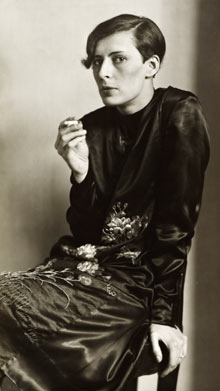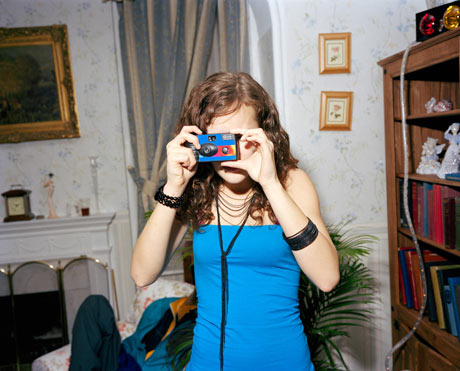
April Pearson, ‘Skins’, Watford, 2006. © Ewen Spencer, courtesy of the photographer
Everything Was Moving: Photography from the 60s and 70s
13 September 2012 – 13 January 2013
Barbican Art Gallery, London
What’s everyone saying?
“I am delighted to bring together an amazing group of photographers whose striking and powerful images of the 1960s and 1970s make us look at the world again.” Kate Bush, exhibition curator

being in white area illegally.
© The Ernest Cole Family Trust, courtesy of the Hasselblad Foundation
“There are so many different worlds here that the very idea of a historical moment is challenged. It is more a set of vivid glimpses of a period in which everything that was moving was caught, and transformed, by a generation alert to the myriad possibilities of photography.” Sean O’Hagan, the Observer
“What this exhibition gives us, by and large – and without ever spelling it out – is photojournalists’ personal work: not punchy stories grabbed in two- or three-day assignments, but projects that absorbed them over years, even decades, and pushed them to develop highly personal means of expression.” Mark Hudson, the Daily Telegraph
“No matter how many great works the curators pack in here – and they are displaying many extraordinary photographs – they can’t make the title premise true. Everything wasn’t moving in the 1960s and 70s: some things were and others weren’t, and in neither case was the touchpoint at the start of the decade.” Nina Caplan, Time Out
The verdict
The exhibition documents social conditions around the world in the 60s and 70s through the work of modern greats such as Bruce Davidson, David Goldblatt, Graciela Iturbide and William Eggleston. The beautiful, brooding colour in Eggleston’s photographs of the American deep south contrasts with Davidson’s empathetic black-and-white reportage of the civil rights struggle; similarly, Goldblatt’s formal, considered work on mainly white South African communities during apartheid is complemented by black photographer Ernest Cole’s more immediate perspective as a black man living through this era.
Although some critics have questioned the cohesion of the exhibition, the photographers’ work is essentially forged by their concerns in the political environment which they photographed for many years.
The result is a powerful, moving exhibition with some extraordinary photographs. Give yourself plenty of time to take it all in.
August Sander
29 September 2012 – 6 January 2013
New Walk Museum & Art Gallery, Leicester

Galleries of Scotland, courtesy of Anthony d’Offay
What’s everyone saying?
“His photographs are unflinching documents of a society going through huge change. The work reflects both the catastrophic political convulsions that Germany was enduring and a society slowly coming to terms with the impact of industrialisation. The clarity and breadth of his vision remains powerful and his vocational portraits still resonate today.” New Walk Museum
“Nothing is more hateful to me than photography sugar-coated with gimmicks, poses and false effects. Therefore, let me speak the truth in all honesty about our age and the people of our age.” August Sander in 1927
“Seeing portraits of Nazi officials opposite portraits of the persecuted, artists and philosophers creates a dichotomy seldom experienced in the photography of the early 20th century.” Hande Eagle, Aesthetica
The verdict
This is a comprehensive survey of August Sander’s work, presenting 175 works by one of the 20th century’s most important photographers.
It shares a similar theme to the Barbican exhibition in that it documents a society going through significant change. Here, it is early to mid 20th-century Germany. This society is illustrated through Sander’s portraits of people from all social classes. He photographed industrialists, farmers, army officers, secretaries, circus artists and the unemployed in a formal, simplified style that allowed each subject space and dignity. Underlying these portraits, though, is war: his subjects are either in the aftermath or at the outset of the two world wars. This brings a solemnity to the work and makes viewing it an affecting experience.
England’s Dreaming by Ewen Spencer
4 October 2012 – 13 November 2012
White Cloth Gallery, Leeds

What’s everyone saying?
“Shot in Spencer’s signature flash photography style, the candid photos show Britain’s youth in action as they tackle the sensitive issues of dating, sex and socialising. What results is a strikingly intimate, somewhat shocking and often disturbing display of what goes on when parents are absent and youths are left to their own devices.” White Cloth Gallery
“Spencer’s photographs form a powerful social document that reflects on the rapidly changing cultural and social challenges that impact upon our young people and the effects this has on them and their place in contemporary Britain.” Wayne Ford, posterous.com
The verdict
Ewen Spencer began his career working for the Face, i-D and Sleazenation and he quickly became known for the quality of his work on youth culture. In 2001 he embarked on the project Teenagers, which documented the rituals of being an adolescent in this country. He photographed the drinking, dating and partying using a style of flash photography which became his trademark. His work on the London grime scene was published as a book, Open Mic, and he has also worked on projects with the Streets and the White Stripes.
The exhibition draws together this work from the last 15 years to produce a document on today’s youth culture that is energetic and resonant.
guardian.co.uk © Guardian News & Media Limited 2010
Published via the Guardian News Feed plugin for WordPress.









